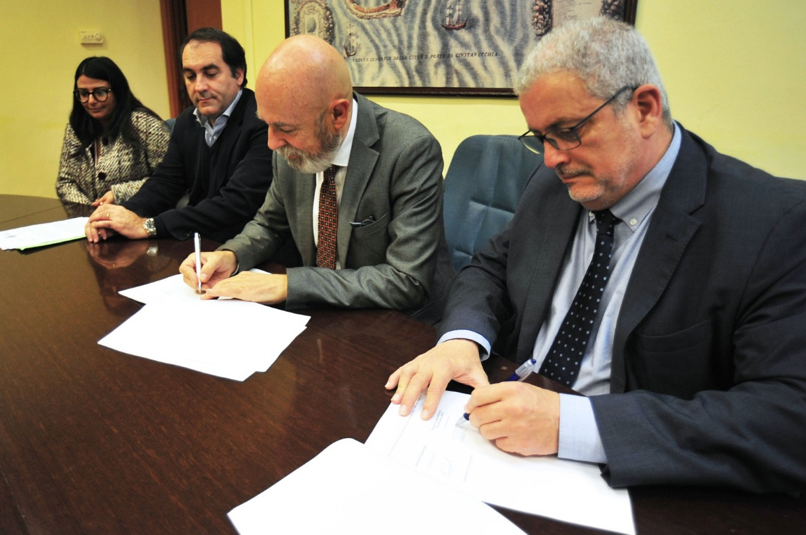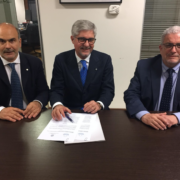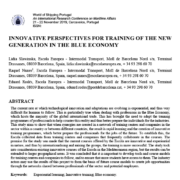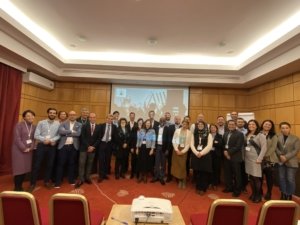The Municipality of Civitavecchia and Confitarma collaborate with the Escola Europea in “Formati al Porto”
Last month the mayor of Civitavecchia, Ernesto Tedesco, together with the vice mayor Massimiliano Grasso, the president of Confitarma, Maurizio Mattioli, the general manager of Confimatra Luca Sisto, and the director of the Escola Europea Eduard Rodès have signed a cooperation agreement, guaranteeing the availability to finance training courses within the port area of Civitavecchia. The new project “Formati al Porto” supported by the AdSP of the Tyrrhenian Sea in the Centre-North and by the Escola Europea – Intermodal Transport, aims to bring today’s students and future professionals closer to the knowledge of the professions of the logistics sector, with a particular focus on maritime activity and intermodal transport.
The project was borne out of a context in which the logistical positioning of the port of Civitavecchia, both in terms of territorial and socio-economic aspects, must take infrastructural measures, offer competitive services and, above all, invest in the human factor. For this, a well-prepared logistical community, capable of facing future challenges and strategically placing Civitavecchia at the forefront of the logistical activity of the Mediterranean, is needed.
The main objective of the initiative is to bring the community closer to port activities and to make it possible for the young to discover the characteristics of the professions related to port undertakings directly from the sources themselves. The students will have direct experience of infrastructure, facilities and operations. In addition, the project will lessen the disparity between the qualifications required by the companies and the skills curently offered by the education system.

The Municipality of Civitavecchia, thanks to its privileged position near the main logistic infrastructures of Lazio, including the port, the industrial area and the parks of the logistic activities, brings together many professionals and operators who work mainly in the port of Civitavecchia and who share the passion to spread the training in this professional specialty among the students of the educational centers that focus on port activity, tourism, transport, logistics and international trade.
Confitarma is the primary association within the Italian shipping industry, representing almost the entire merchant fleet of the country and bringing together shipping companies and shipping groups operating in freight and passenger transport, cruises and ancillary services traffic. In particular, it provides its members with information and offers assistance on development, the environment and energy, infrastructure and logistics, tourism, business culture, the labour market and training.
Following the great success of the first Formati al Porto course held last week at the AdSP of the Tyrrhenian Centre-North Sea, these new agreements will give many more students the opportunity to participate in the training courses organized by the Escola Europea.
The training is given by experts and professionals from the Italian and Spanish sectors, ensuring that the participants receive high quality educational content. The teaching team, yet to be confirmed, will be composed of representatives of companies and institutions directly involved in the management of short sea shipping in Italy.
You can find out more infromation about the Escola’s courses, both in Italy and in Spain, on the following website:





